White-lined Sphinx Moth (Hyles lineata) - Springtime in Colorado
Watching a White-lined Sphinx Moth vistingin flowers in the garden
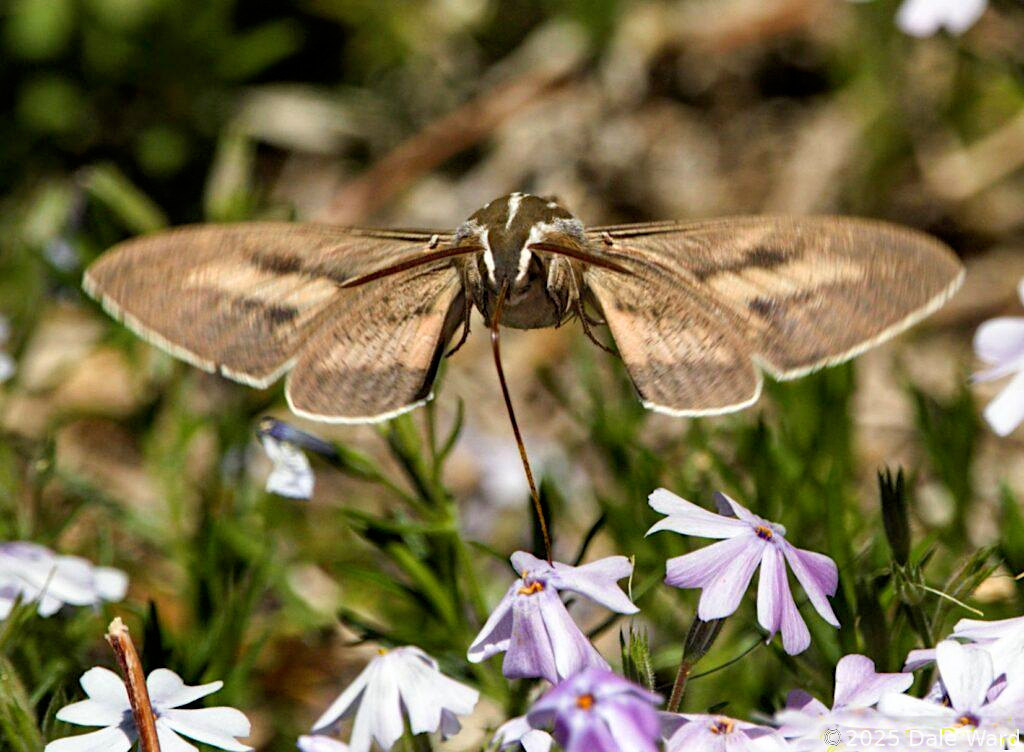 Front view of a White-lined Sphinx Moth (_Hyles lineata_) as it feeds on Phlox flowers. We’re looking at the underside of the Moth’s wings in this photo. Look at the angle of the Moth’s wings - they are nearly perpendicular to the ground. Think about how difficult it must be for a Moth to hover like this, the gymnastics and literal gyrations that their wings need to make in order to hold their body mostly motionless.
Front view of a White-lined Sphinx Moth (_Hyles lineata_) as it feeds on Phlox flowers. We’re looking at the underside of the Moth’s wings in this photo. Look at the angle of the Moth’s wings - they are nearly perpendicular to the ground. Think about how difficult it must be for a Moth to hover like this, the gymnastics and literal gyrations that their wings need to make in order to hold their body mostly motionless.
Here’s a nice surprise from the garden last week (May 6, 2022).
A White-lined Sphinx Moth was visiting our Phlox flowers. I last saw one of these Moths in early October of 2021, over in Utah.
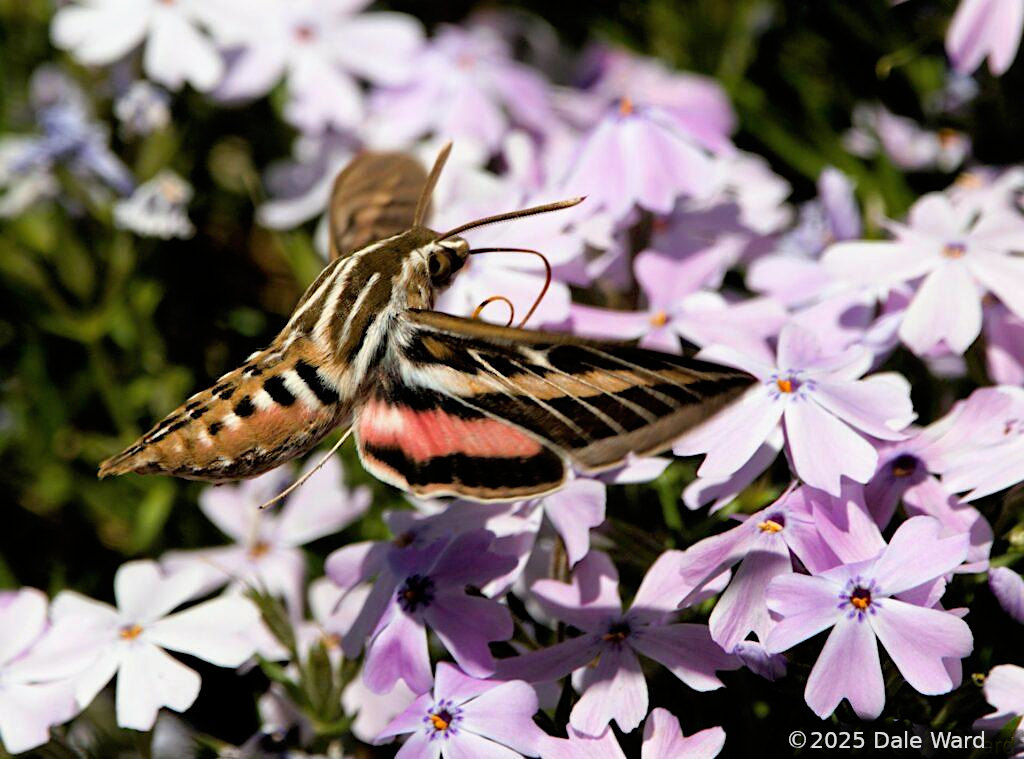 White-lined Sphinx Moth (_Hyles lineata_) hovering over Phlox flowers. I like the bright patters on the Moth, and the pink-red of its hind wing.
White-lined Sphinx Moth (_Hyles lineata_) hovering over Phlox flowers. I like the bright patters on the Moth, and the pink-red of its hind wing.
This one had the same stop-motion quality that the previous one had. The Moth would hover with its body nearly motionless at a flower for ten or fifteen seconds, then suddenly appear at another flower. When it moved, it moved so quickly that it was like watching the Moth teleport.
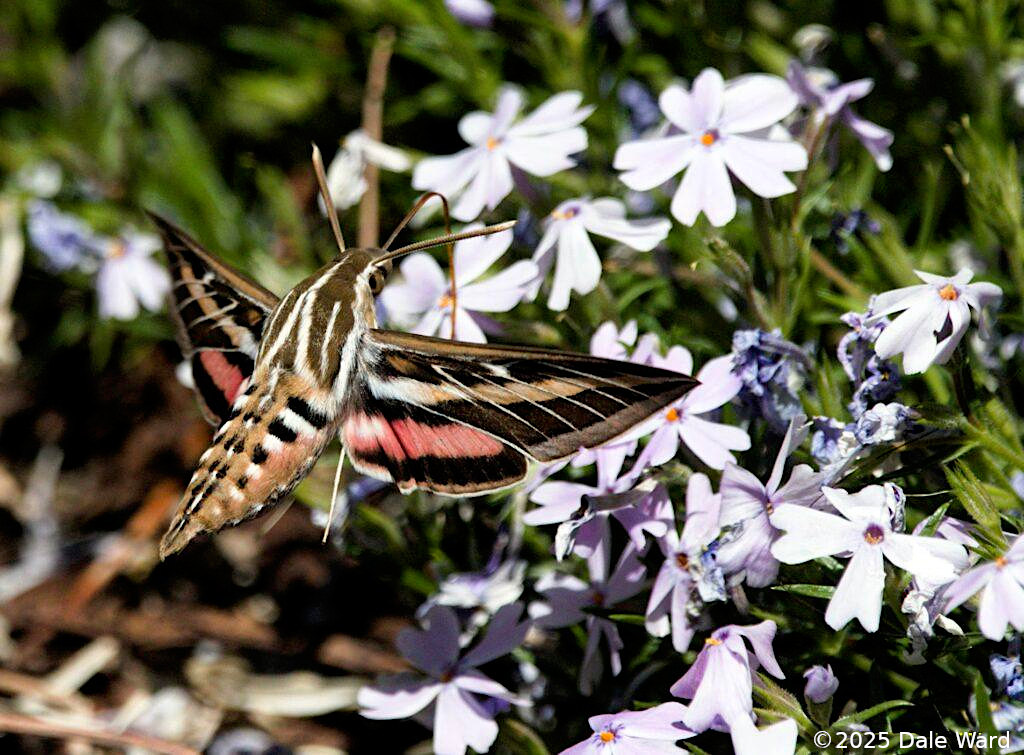 White-lined Sphinx Moth (_Hyles lineata_) hovering at Phlox flowers.
White-lined Sphinx Moth (_Hyles lineata_) hovering at Phlox flowers.
I had really bright sun on this day, so was able to use a high shutter speed to ‘freeze’ the hovering Moth’s wings.
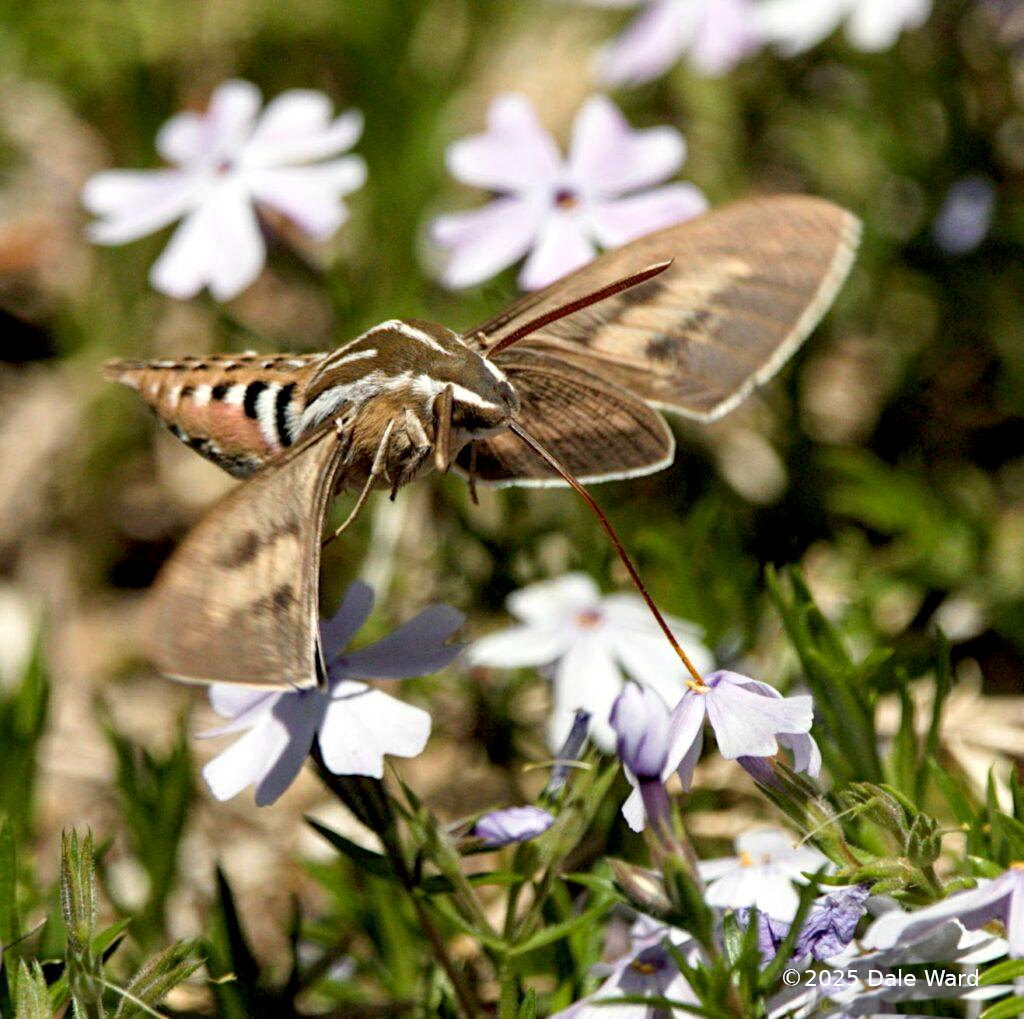 White-lined Sphinx Moth (_Hyles lineata_) feeding at a Phlox flower. Look at the angles of the wings as the Moth hovers, and at the pollen grains on the Moth’s proboscis.
White-lined Sphinx Moth (_Hyles lineata_) feeding at a Phlox flower. Look at the angles of the wings as the Moth hovers, and at the pollen grains on the Moth’s proboscis.
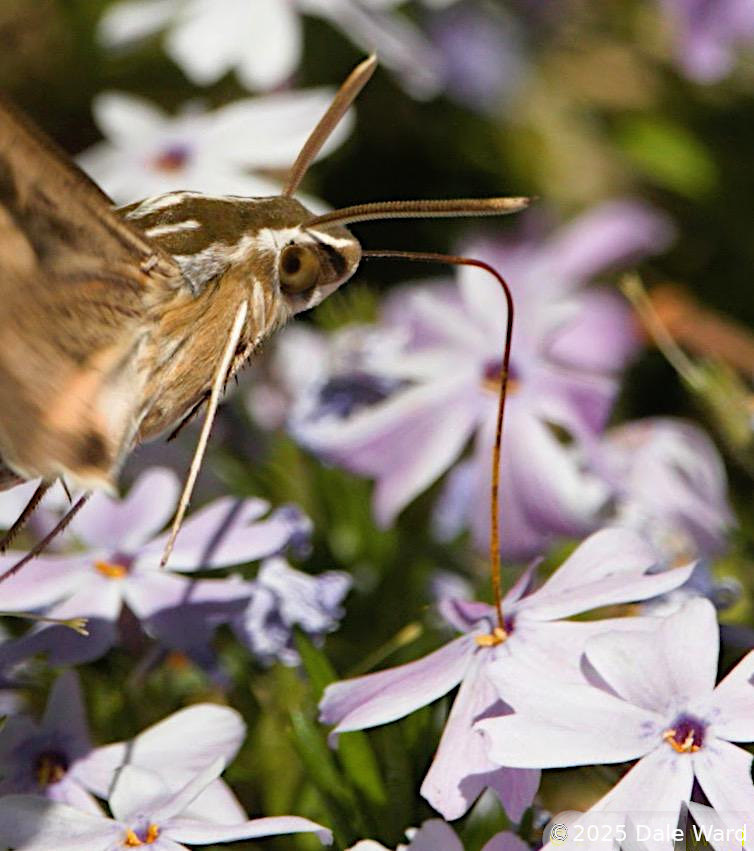 Close-up of Moth’s head and proboscis. You can see pollen grains coating the Moth’s proboscis.
Close-up of Moth’s head and proboscis. You can see pollen grains coating the Moth’s proboscis.
This was a real treat because I was able to see the leading edges of the wings flexing from the air resistance as the Moth traced out a figure-eights with its wings to maintain its hover.
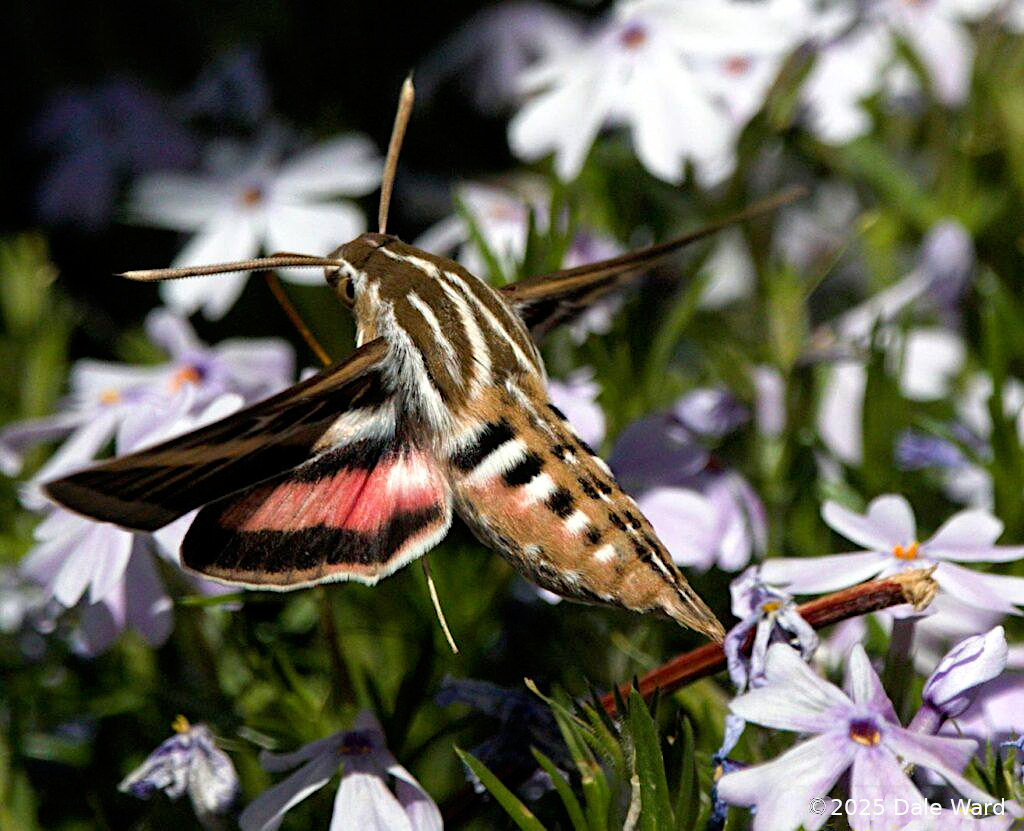 Another view of a White-lined Sphinx Moth (_Hyles lineata_) hovering at a Phlox flower. We’re looking at the upper surface of the wings in this photo. Look at the angles of the Moth’s forewings - the leading edges of the wings are actually pointing backwards at this point.
Another view of a White-lined Sphinx Moth (_Hyles lineata_) hovering at a Phlox flower. We’re looking at the upper surface of the wings in this photo. Look at the angles of the Moth’s forewings - the leading edges of the wings are actually pointing backwards at this point.
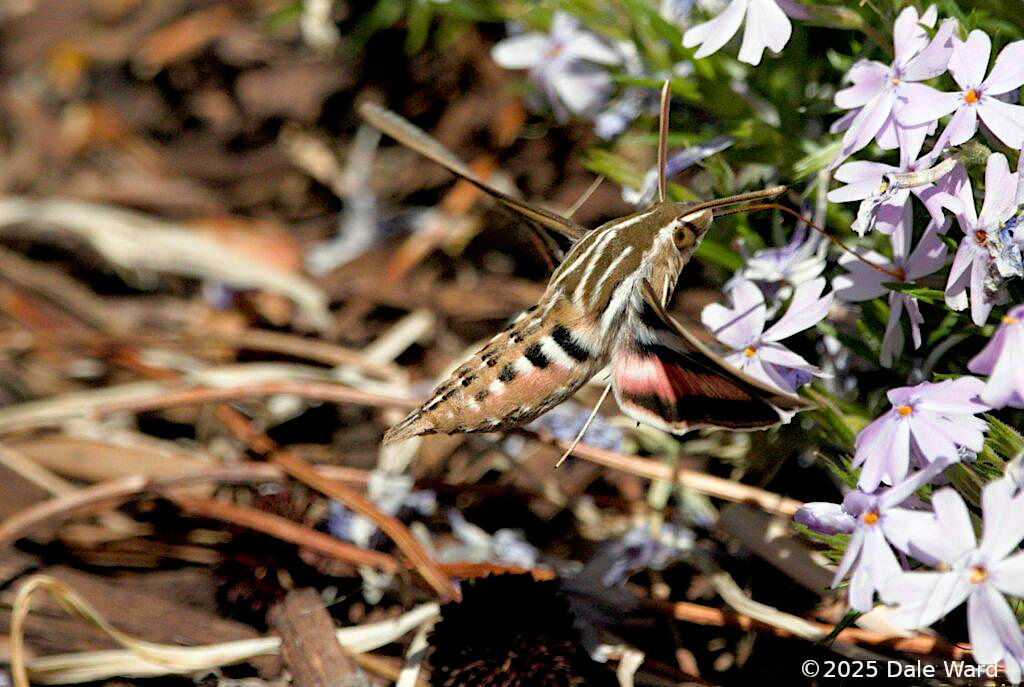 Another view of the White-lined Sphinx Moth (_Hyles lineata_) hovering. Its forewings are pointing backwards as the Moth draws complicated figure-eights in the air, trying to maintain its hover.
Another view of the White-lined Sphinx Moth (_Hyles lineata_) hovering. Its forewings are pointing backwards as the Moth draws complicated figure-eights in the air, trying to maintain its hover.
The Moth must make a staggering number of calculations, consciously or not, for it to be able to hang in the air like this, keeping its body more-or-less motionless, while it uncoils its long proboscis and threads it into a flower.